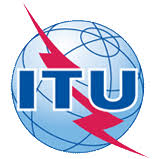Y.4908 - Performance evaluation frameworks of e-health systems in the Internet of things
Currently e-health systems are being implemented by governments and stakeholders to increase the effectiveness, efficiency and the quality of health care services. The Internet of things (IoT) as a relatively new technology is transforming e-health systems to further enhance health care services. However, this transformation concomitantly creates a need for effective performance evaluation frameworks of e-health systems in the IoT.
Recommendation ITU-T Y.4908 addresses this need for effective performance evaluation frameworks of e-health systems in the IoT and includes:
- A classification of e-health services in the IoT.
- A non-exhaustive set of non-functional performance evaluation factors applicable to the e-health systems in the IoT.
- Performance evaluation frameworks for e-health systems in the IoT.
